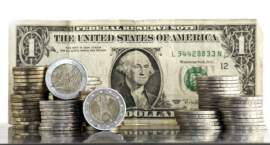
Value Added Tax or VAT Overview

The value added tax, or VAT tax, is an excise tax that has successfully been implemented in many countries. In fact, most of Europe pays a value added tax on certain items. Currently, the tax reform movement in the United States has proposed value added taxes as a replacement for Federal income tax.
In addition, members of congress have proposed value added taxes as way to make revenue to lower the Country's deficit. If the United States began to impose value added taxes, the tax would be in addition to federal income taxes, and other taxes already paid by citizens. Whereas, the tax reform movement hopes to eliminate other taxes, and have the country rely on the value added tax.
Value added taxes are imposed at every stage of the development of a product. That means that each stage of the manufacturing of a product, has a value added tax associated with it. The tax burden would be shouldered by the consumer and by businesses. Each time their is a transaction associated with the manufacturing of a completed product, their is a VAT tax associated with that transaction. Every stage of manufacturing, up to and including the sale of a completed product, incurs the VAT tax.
Those that oppose value added taxes, say that the lowest class ends up shouldering a majority of the tax burden based on a percentage of income. In other words, the rich end up paying less taxes as it pertains to percentage of their income. If taxes are only imposed on products, the rich end up paying a lower percentage of taxes from their overall income. The value added tax is a percentage of tax based on the cost of a product.
For the lower class and the middle class, that tax represents a higher percentage of their overall income which means that they shoulder a majority of the tax burden based on percentage. However, it has been suggested that the distribution of value added taxes can be more equally distributed among the classes. For example, higher end products, which are more likely to be purchased by the wealthy, could be taxed at a higher rate. By taxing higher end products at a higher percentage, the tax rate is more evenly distributed among taxpayers, based on their income.
As a excise tax, the Value added tax could evenly distribute the tax burden on all tax payers. However, the VAT would only work if higher end products incurred a higher rate of tax. In the absence of a product classification for tax burdens, the VAT would be unfair to the lower and middle class.
NEXT: State Taxes




















